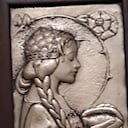Which pastry’s name literally means “lightning”?
Just the thought of a classic éclair can make one's mouth water. What’s not to love about an oblong of choux pastry, filled with flavored cream and topped with chocolate icing? Today they are a common sight in bakeries, but when and where did the éclair originate, and how did they get that name?
Éclairs originated in France. Their name literally means “lightning” (or “bolt or flash of lightning”) in French. The word first began to be used when referring to the pastry in the 1860s. Before that, the same creation had been known as “petite duchesse”. The pastry itself is believed to have been created by French chef Antonin Carême, who is also responsible for other yummy desserts, including the Charlotte and Napolean cake.
The new name first appeared in print (in English) in an article in ‘Vanity Fair’ magazine in 1861. A few years later, in 1884, a recipe for éclairs was published in the ‘Boston Cooking School Cook Book’.
Although the name is exactly the same as the French word for lightning, nobody seems to know exactly why it began to be used when referring to the pastry. However, there are at least two theories. Some surmise that the name alludes to the fact that people tend to eat them quickly, bolting them down, as it were; others feel it may be a reference to a gleam or flash of light from the shiny fondant icing. Somewhat in harmony with the first theory, the treat was defined in the 19th century ‘Chambers Dictionary’ as "a cake, long in shape but short in duration."
More Info:
en.m.wikipedia.org







